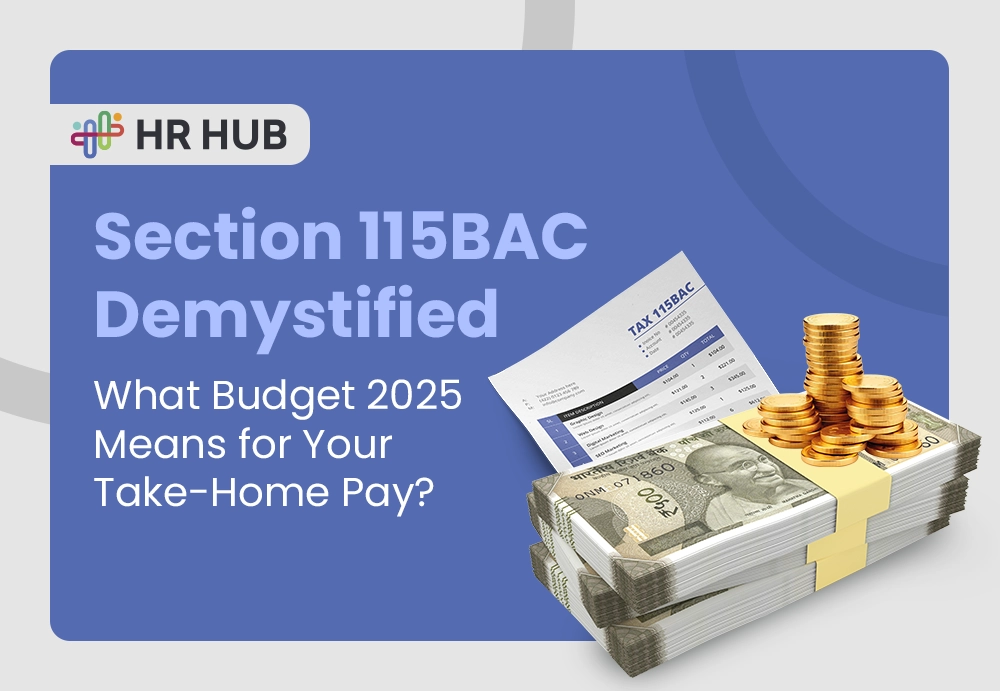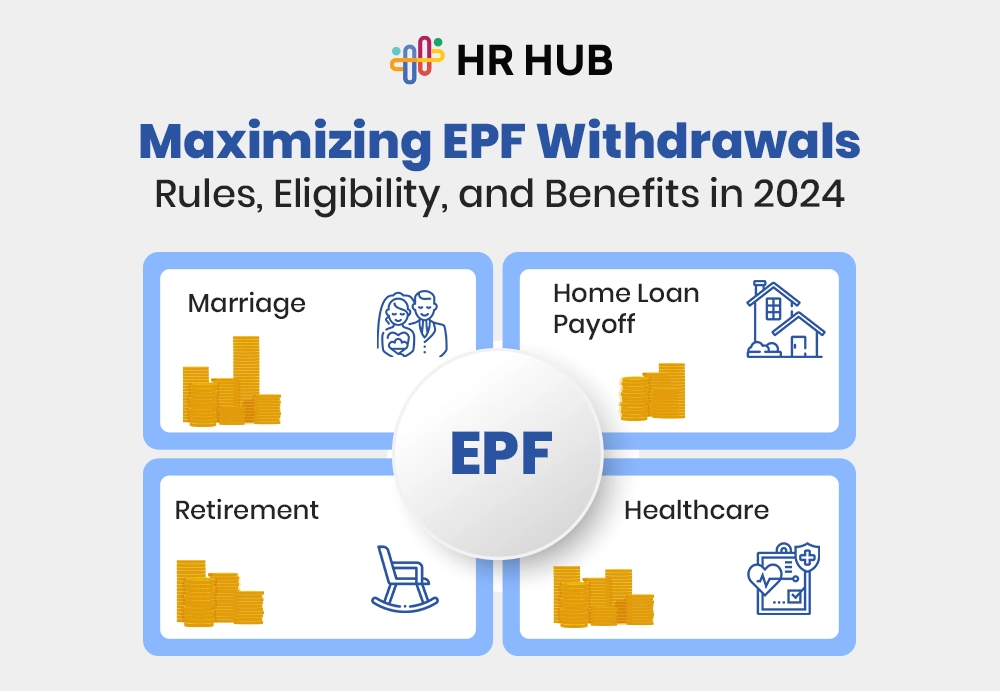Let's be honest: there is nothing pleasant in gazing at some career gap on your resume rather than looking at a big blemish atop your professional reputation. Months or even years might pass by; the last thing you might feel is a general fear and uncertainty about how potential employers might view such gaps in your career break.
This blog guides you in transforming those gaps from potential liabilities into compelling narratives of personal growth and professional development.
Learn how to address these pauses effectively in your resume and cover letter to catch an employer’s eye positively.
Understanding Employment Gaps
An employment gap is any period when a person was not employed formally. These gaps can arise for various reasons:
- Personal health issues or caregiving for family members.
- Pursuing further education or professional training.
- Voluntary break for personal development or travel.
- Layoffs or periods of seeking employment in a tough job market.
How Do Employment Gaps Impact Job Searches?
Most employers today believe that career breaks are inevitable and might even enhance a candidate's profile if done correctly. Many job applicants fear employment gaps might relate to the lack of reliability or commitment.
Preparation: Before You Write
Self-Assessment Example
Suppose you chose to take a gap year to care for an ailing family member. During this career gap year, you'd also complete an online project management course focused on areas that complement Recruitment Management and volunteer at a local nonprofit organizing community events. All these things will be part of the activities to show that you were not idle and could continue improving your skills.
Addressing Employment Gaps in Your Resume
How you present your employment gaps will make all the difference in how candidates perceive your resume. The proper format of the resume, combined with the strategic placement of your experience, will minimize the impact these gaps have.
Choosing the Right Resume Format
The employment gap resume examples you adopt may highlight or hide weaknesses depending on how you organize your information. Here are three common resume formats and when to use them:
- Chronological Resume: Under this type, your working history will be reverse chronological. This is the simplest resume and is favored by most employers since it forms a timeline of your work history. However, it leaves gaps. Even though gaps are not for so long or you have a relatively smooth history of career progression, it is recommended.
- Functional Resume: This kind of resume focuses more on your skills and accomplishments than the chronological listing of work. It is best suited for someone who has had a long gap in employment or who has changed jobs many times. It allows the qualifications to be grouped by skill instead of by job, which de-emphasizes gaps in employment.
- Combination Resume: This format merges elements of both chronological and functional resumes. It starts with a detailed skills section followed by a chronological work history. This style allows you to highlight your relevant skills while providing the necessary context of your work history, making it suitable for those with some solid experience before or after gaps.
Techniques to De-emphasize Gaps
- Skill Grouping: Group your professional experience by skill or project instead of by job, and talk about what you've accomplished rather than when. In this way, you'll bring relevant qualifications to the job without drawing attention to the length of each job.
- Summary Statement: A summary statement at the top of your resume serves to write a powerful story about your skills and intentions regarding your career. This is where you may frame your career break positively right from the beginning.
Examples
Here are two detailed employment gap resume examples to illustrate how to use different resume formats and techniques to address employment gaps:
Example 1: Chronological Resume with Short Gap
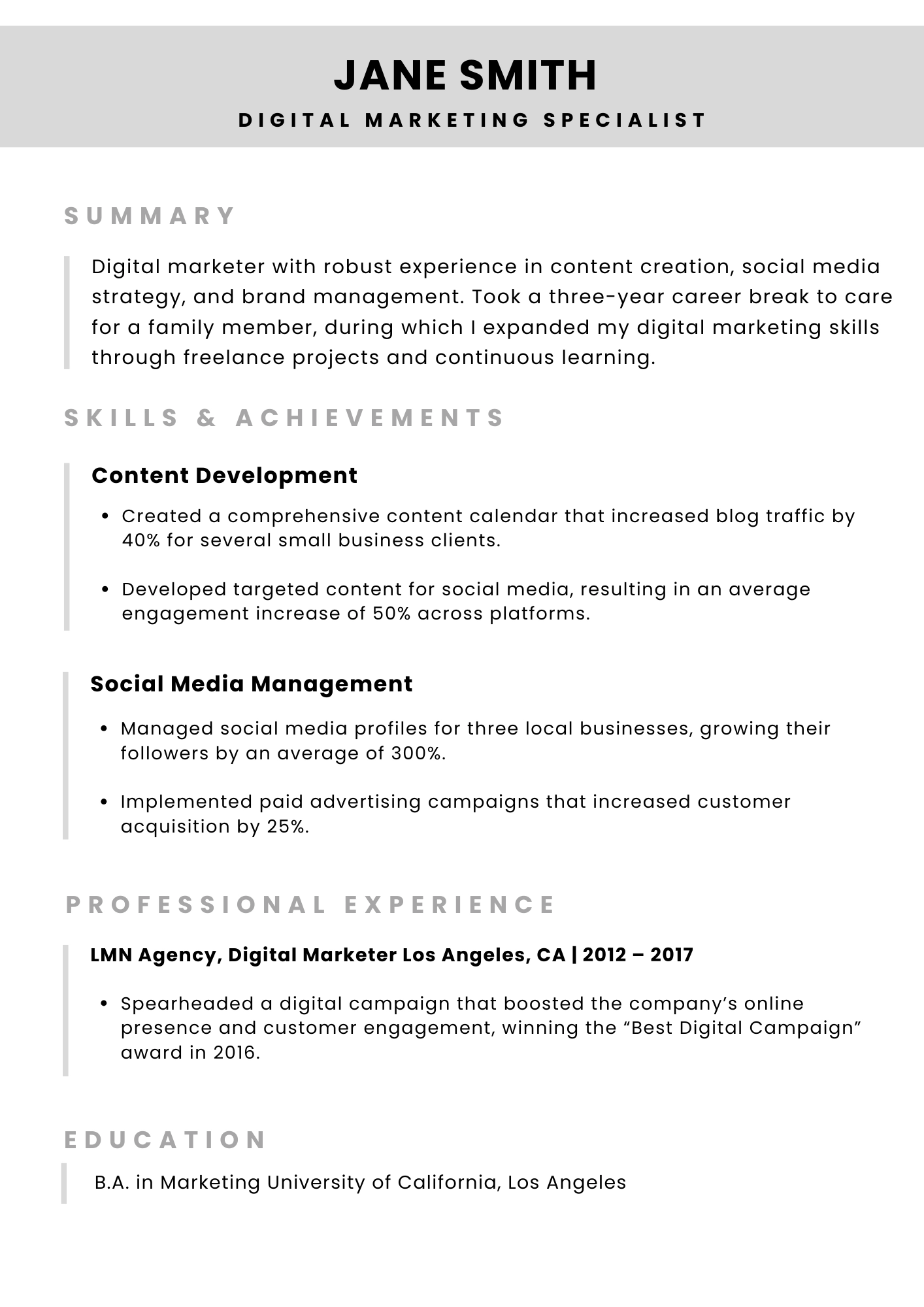
Example 2: Functional Resume for Extensive Gap
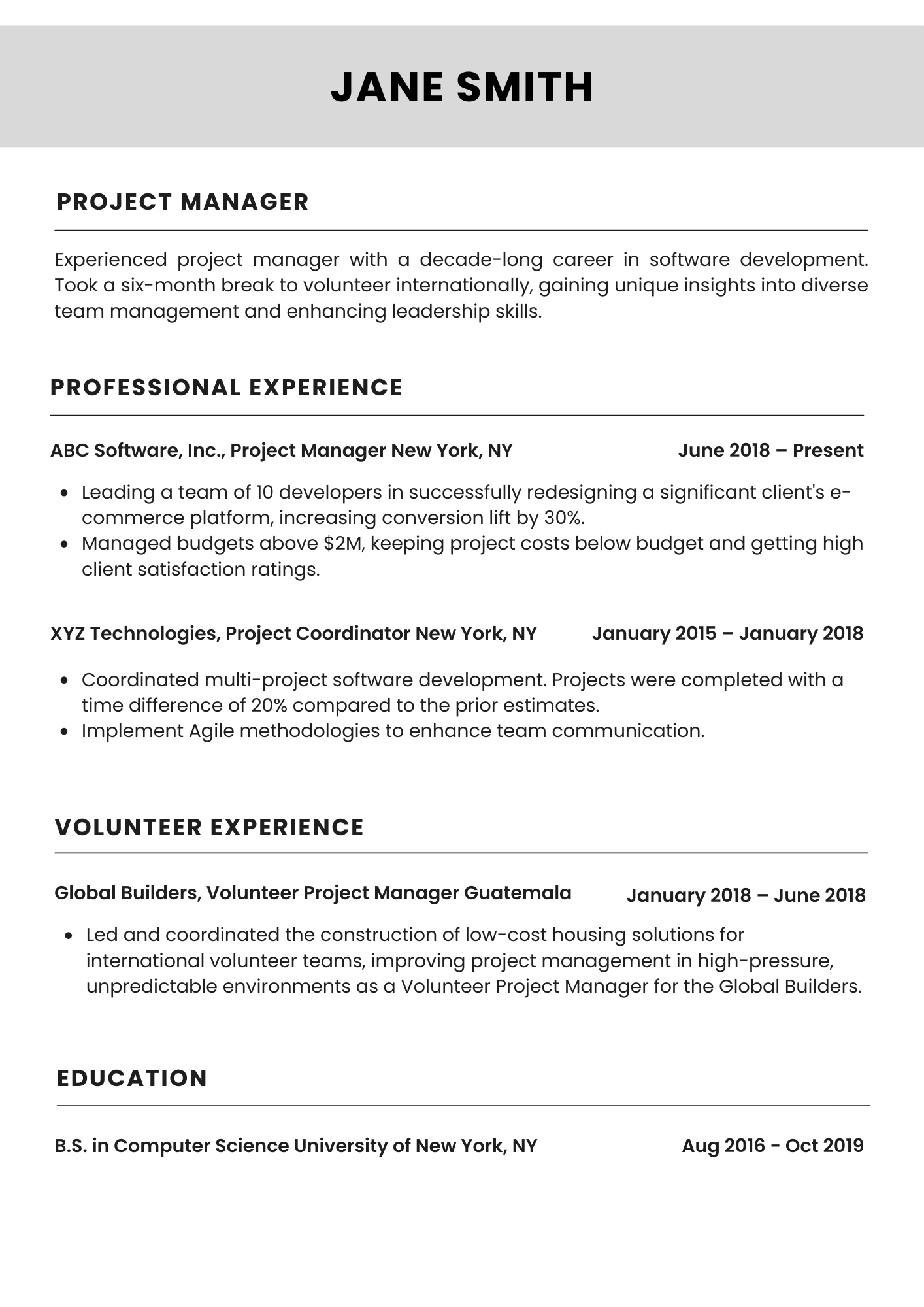
The sample resume with employment gaps demonstrates how to structure your resume to positively highlight your strengths and experiences, regardless of employment gaps. By focusing on skills and achievements and framing your narrative effectively in your summary, you can turn potential vulnerabilities into showcases of growth and capability using the prominent sample resume with gaps in employment.
Crafting Your Cover Letter
Transparency is key when dealing with employment gaps in your cover letter. It’s important to address the career gap confidently and positively, focusing on growth and achievements during that time. Your cover letter should complement your resume by offering narrative details about your skills and experiences during the gap.
Key Points to Address in Your Cover Letter
- Acknowledge the Gap: State the time gap in the typical workforce.
- Focus on skills and achievements: Highlight what you learned and accomplished.
- Relate it to the Job: Explain, with employment gaps on resume examples from your experiences during the gap, how these will make you a better candidate for the job you are applying for.
- Conclude Positively: Reiterate your interest in the job and your eagerness to return to work.
Cover Letter Example:
You spent two years working abroad with a non-profit organization. Your cover letter can address this as a professional development experience: "In my time with [Non-Profit Name], I acquired core global communication skills and a deep understanding of cross-cultural project management, directly pertinent to your firm's international emphasis."
If you're being asked to leave all studies behind for two years to work with a nonprofit agency overseas, see how you can structure your cover letter to turn this into an asset:
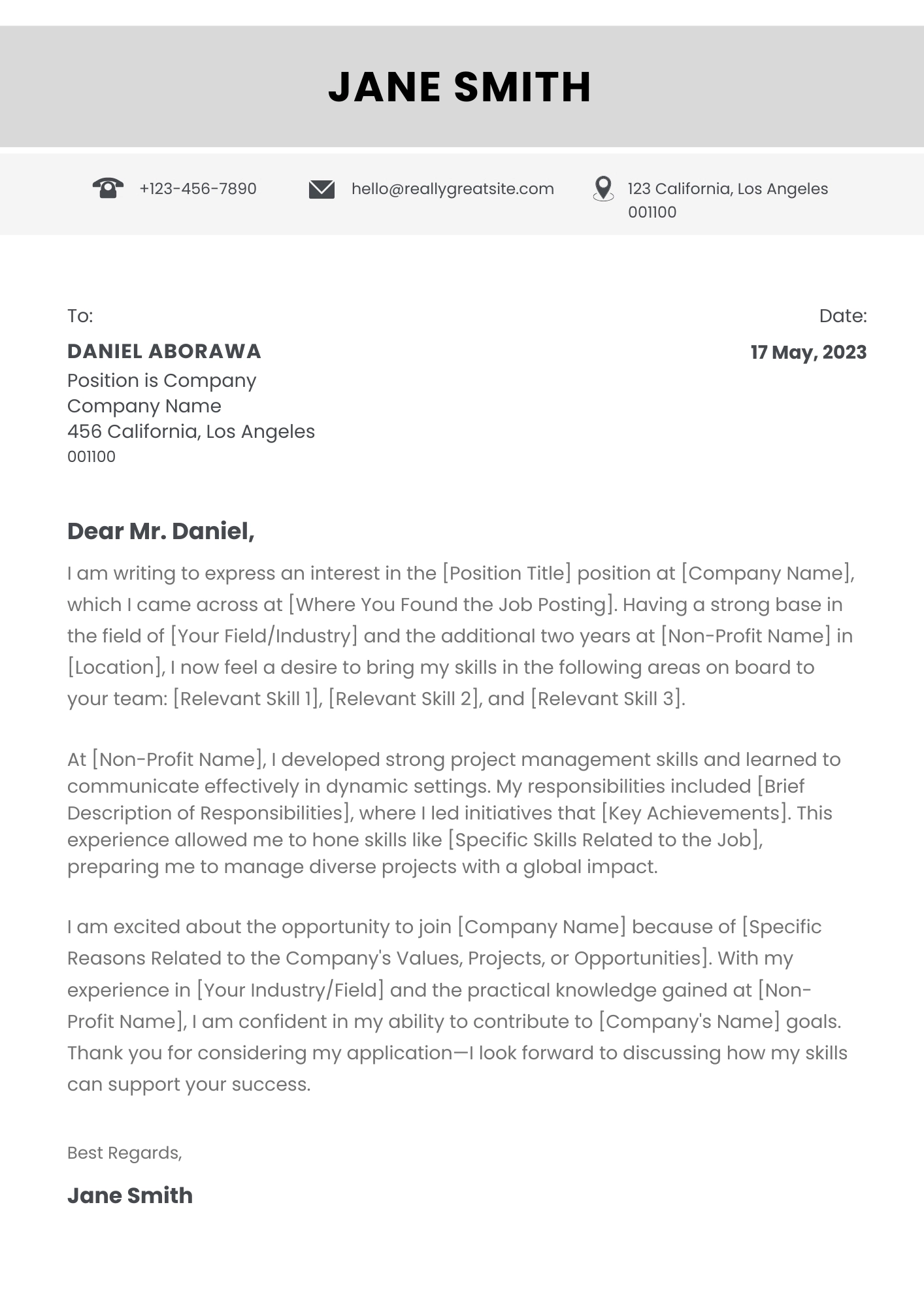
Leveraging Other Components of Your Application
LinkedIn Strategy Example
Update your LinkedIn profile to reflect any constructive activities during your employment gap. For instance, add any freelance projects or professional development courses. Endorsements and recommendations from colleagues or clients for these activities can also be very persuasive.
Job Interview Preparation
Be ready to discuss your career gap openly in interviews. For example, if you traveled, explain how this experience broadened your perspective, making you a better candidate for positions requiring creativity and adaptability.
Wrapping Up: Turning Career Pauses into Launching Pads
As we conclude this exploration of addressing employment gaps in resumes and cover letters, remember that every career path is unique, marked by its challenges and triumphs. Often viewed as obstacles, employment gaps can be periods rich with personal and professional growth. By articulately presenting these experiences, you demonstrate resilience, adaptability, and the continuous pursuit of learning—invaluable qualities in any professional setting.
In today's dynamic job market, tools like HR HUB can streamline your transition back into the workforce. Whether updating your resume with recent volunteer work or tracking professional development courses during a break, solutions like HR HUB provide the framework to manage your professional journey effectively. By leveraging such tools, you can maintain a clear and comprehensive record of your career milestones, ensuring that every phase of your professional life, including gaps, contributes positively to your narrative.




